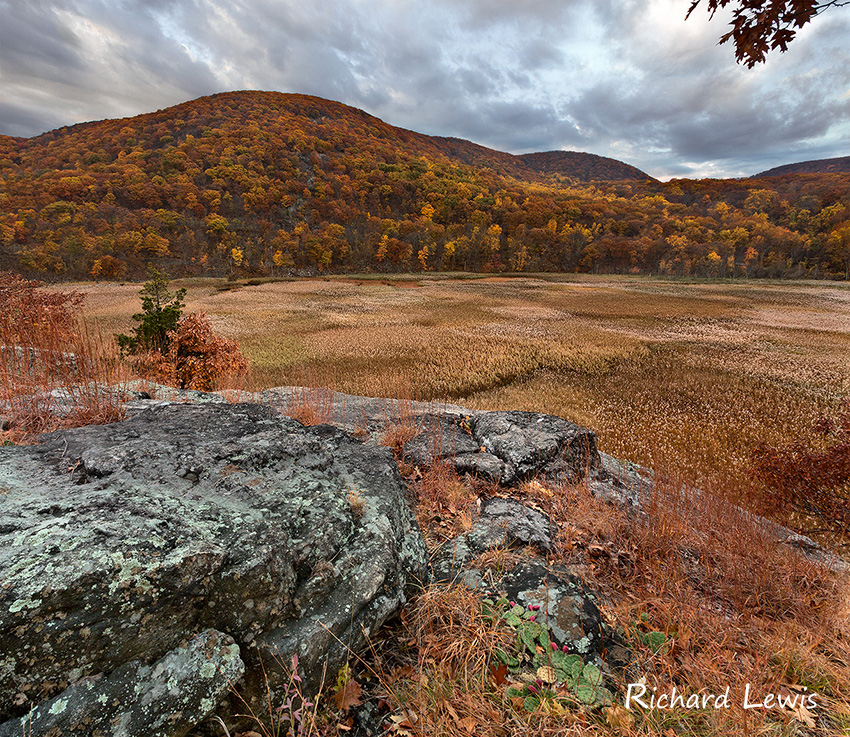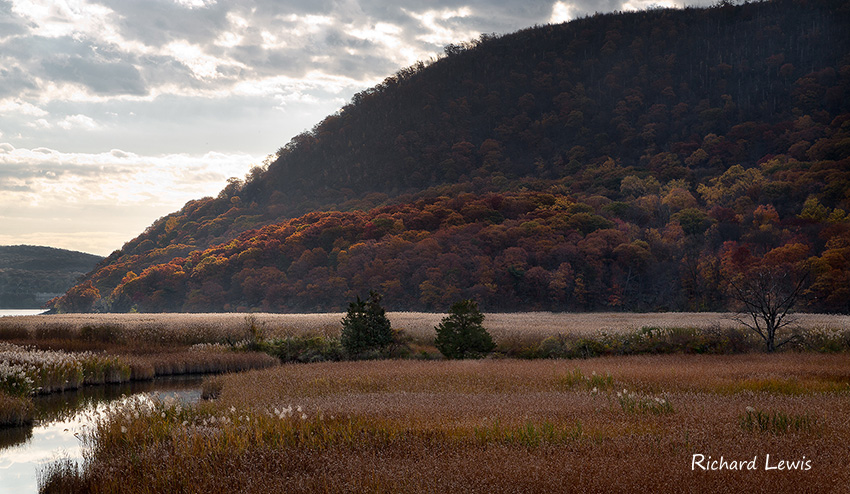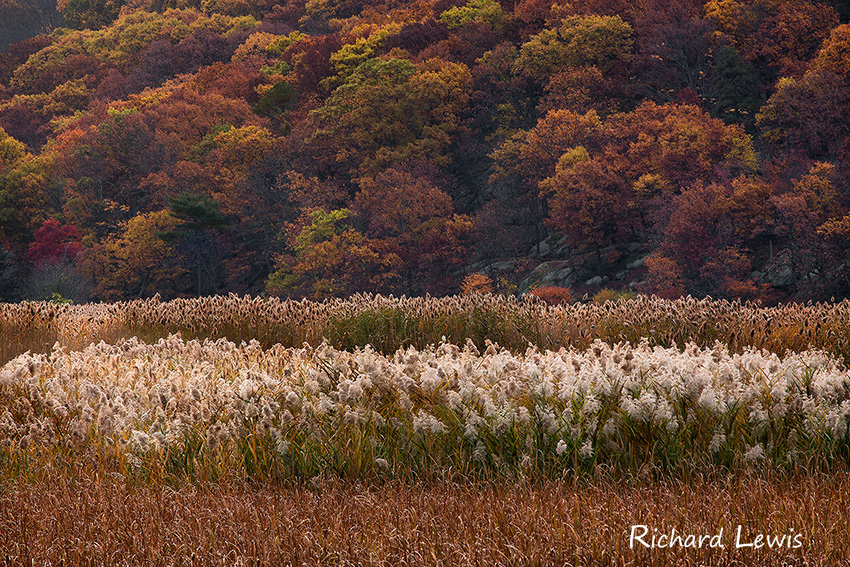Note: Starting with this blog post I will be discussing a little bit of why and how I create my photographs.
This is the first of a 3-part post on a recent photography field trip I lead to Harriman State Park in New York. Usually my trips to Harriman involve leading hikers wanting to visit remote lakes and vistas that are only accessible by rugged hiking trails. This was my first time leading photographers who were not interested in hiking, especially in dragging heavy photographic equipment up the sides of steep mountains. When planning this trip I had to find places that were easy to get to and showed the flavor of the landscape in a way that would inspire great photography. Harriman State Park and its surrounding parks and state forests make up an amazing piece of wilderness just 30 miles from New York City. Although I’ve hiked here many times, on this trip I got to experience it in a completely different way.
Iona Island, Again
These photographs are from Iona Island located on the Hudson River. This is a bird sanctuary with vast marshes and one of the few places where there are unobstructed views of the mountains. See my previous post of photographs from Iona Island
I wanted to get the true flavor of Iona Island, so I climbed a hill and found this overlook. The scene includes the lichen covered rocks, the patchwork of marsh grasses and Dunderberg Mountain, along with a cactus which grows plentifully on the hills of the island.
How I did it – This photograph is a vertical panorama made from 2 images. The foreground elements (outcropping and grasses) were on one image and the background mountains and sky were on the other. Not only does this provide a wider view but it allows for better control of the focus because it could be changed to match the elements in the different images.
An artist cannot visit the Hudson Valley without thinking of George Inness and the Hudson River School of landscape painting. Inness worked with dramatic lighting situations. He was very much on my mind when this scene presented itself. When photographing a sunrise or sunset sometimes the best lighting happens before and after the sun crosses the horizon.
How I did it – Because of the wide range of light (deep shadows and bright sky), I originally planned for this to be an HDR or High Dynamic Range photograph. Unfortunately this process did not yield the result I wanted, so I just adjusted the different areas of this photograph using selective contrast tools like Curves in Photoshop. I also processed this image with a couple of George Inness paintings on the screen to provide a visual and inspirational reference point.
Another view of Iona Island showing marsh grasses in rows with the slopes of Dunderberg Mountain in the background.
How I did it – This image was made with a 400mm telephoto lens. Because long telephoto lenses have a very shallow depth of field (how much of the foreground and back ground is in focus), I made two photographs of this scene, one with the grasses in focus and one with the trees in the background in focus. The two were blended together in Photoshop to keep the focus sharp throughout the finished image.




Rich,
Thank you again for leading such a wonderful trip to Harriman State Park. The vistas were wonderful and the company even better!
Great images and thank you for your “how to tutorials”. I’m looking forward to processing my images. I will take your advice and refer to the great landscapes painters of the Hudson River.
I look forward to seeing the rest of your images!
Pat
Pat, it was my pleasure to spend time with you and the others on this trip. I’m glad you like the tutorials.
Thanks for some great images and your brief workshop!
You are very welcome Skip. There is more to come soon.
As ever, the craft of what you do is impressive, not simply because of the eye you have to detail, but the connection from the heart that you have with your subject. How can we not feel a sense of unity with the landscapes you bring to us. The color, the tone, the depth and the sensibility cry out for we the viewers to find wonder in what we see. Thank you, Rich!
Thanks Tom. What you mention in you comment is exactly why I head out in the world with a camera. We live in a pretty amazing world which is one I love to interpret and share.
I like your work here and particularly the tutorial commentary. I haven’t tried a vertical pano but I’m going to keep it in mind. The view from Iona Island grabs me.
Thanks Ralph. I look forward to your what you come up with when you try the vertical panorama.
Very nice Rich. I really like that you are not afraid to depict a dark mood when one exists. I like the low angle, foreground and sky of the first image. Iona Island Grasses is beautiful, very sharp and I love the rich palette.